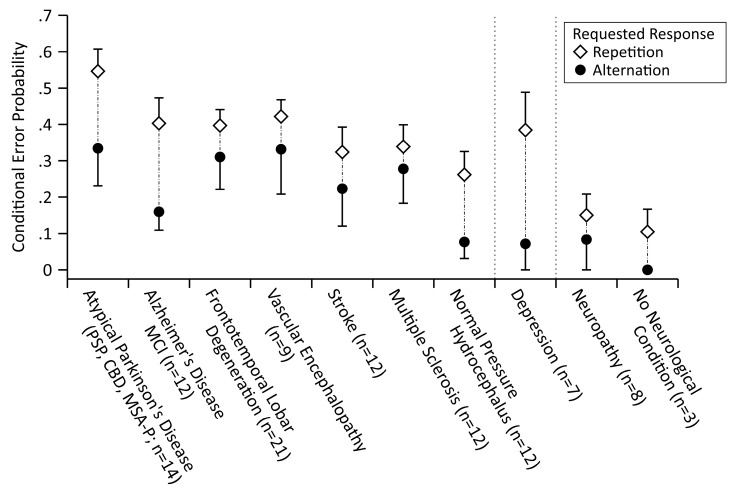Figure 3.
Mean conditional (perseveration) error probabilities in response to a requested rule switch (i.e., following negative feedback, which had been received on the previous trial), separately for the two types of response sequence (requested response repetition/alternation) and as a function of diagnostic entities (atypical Parkinson’s disease (progressive supranuclear palsy (PSP), cortico-basal degeneration (CBD), multi-system atrophy-Parkinsonian subtype (MSA-P)), (early) Alzheimer’s disease/mild cognitive impairment, frontotemporal lobar degeneration, vascular encephalopathy, stroke, multiple sclerosis, normal pressure hydrocephalus, depression, neuropathy, no neurological (or psychiatric) disease). For this analysis, n = 115 patients had sufficient data, but three patients who suffered from idiopathic Parkinson’s disease, a patient who suffered from dystonia, and a patient who suffered from multi-system atrophy-cerebellar subtype (MSA-C) were excluded from this analysis. An error-suppression effect was observed within each diagnostic entity. Error bars depict plus/minus one standard error of the mean. Conditional Error Probability: Probability of an error given negative feedback and response demand (repetition, alternation).

